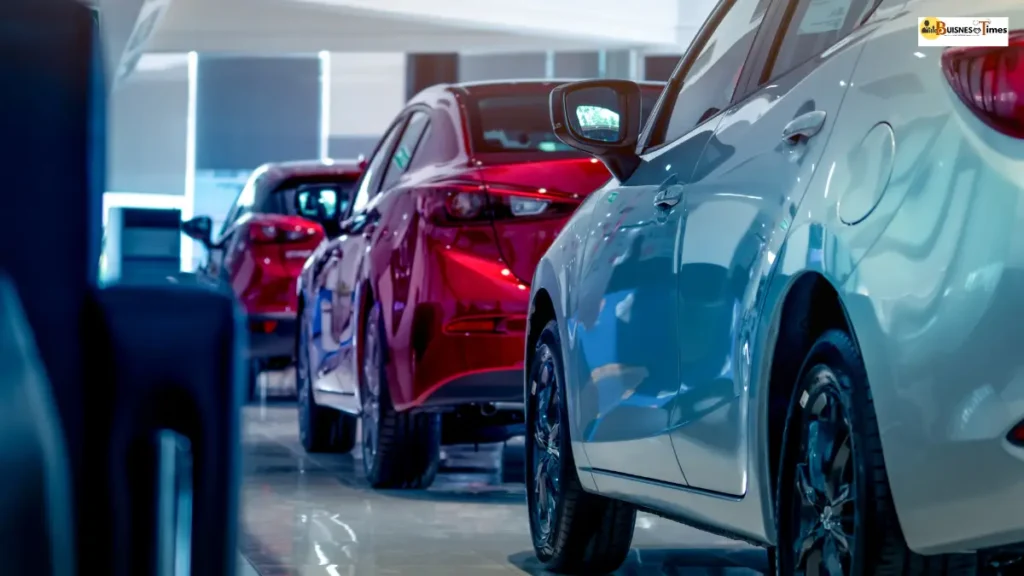GST on luxury cars India’s automobile industry has entered a new phase of tax reform, with the government announcing revised GST slabs that will directly impact the pricing of cars, SUVs, three-wheelers, and other vehicles. At first glance, the news of a 40% Goods and Services Tax (GST) On luxury cars and SUVs may sound alarming for buyers. Higher taxes generally mean higher prices. However, in this case, the opposite is true — many GST on luxury cars could actually become cheaper under the new GST 2.0 structure.
The changes, which will come into effect from September 22, 2025, mark a significant shift in how vehicles are taxed in India. The timing, coinciding with Navaratri and just ahead of Diwali, has been dubbed by policymakers as a “big festive gift” for consumers and the automobile sector.

GST on luxury cars: Understanding the New GST Slabs for Vehicles
Under the revised system, the government has simplified the GST structure while ensuring that revenue from so-called “sin” and luxury goods remains intact. Here’s a breakdown of the new rules:
- Small cars: GST reduced from 28% to 18%
- Three-wheelers: GST reduced from 28% to 18%
- Buses: GST reduced from 28% to 18%
- Ambulances: GST reduced from 28% to 18%
- Transport vehicles (lorries and trucks): GST reduced from 28% to 18%
- Tractor trailers and semi-trailers: Some taxed as low as 5%
- Motorcycles: Below 3500 cc — 18% GST, above 3500 cc — 40% GST
- Gst on Luxury cars, SUVs, XUVs, MUVs, MPVs (engine capacity above 1500 cc, length over 4000 mm, ground clearance 170 mm+): 40% GST
Why Gst on Luxury Cars Won’t Get Costlier
Currently, cars are taxed at 28% GST plus a compensation cess of 17–22%, depending on the category. This meant that the effective tax burden ranged between 45% and 50%.
With GST 2.0, the cess is being scrapped, and instead, a flat 40% GST will be applied. In other words, while the GST headline rate looks higher, the overall tax burden GST on luxury cars will actually come down by 5–10 percentage points.
This reduction means that luxury sedans, SUVs, and premium models from brands such as Mercedes-Benz, BMW, Audi, Toyota, and Jeep may see lower ex-showroom prices once the new rates come into effect.
Gst on Luxury Cars: Small Car Buyers to Benefit the Most
GST on luxury cars The biggest winners from GST 2.0 are small car buyers. Petrol, diesel, LPG, and CNG cars that fall under the “small car” definition will now be taxed at just 18% GST instead of 28%.
A small car in GST terms is:
- Petrol/LPG/CNG engine up to 1200 cc and length up to 4000 mm
- Diesel engine up to 1500 cc and length up to 4000 mm
This reduction of 10% in GST is expected to reduce car prices by ₹40,000–₹80,000 in some models, making popular cars like Maruti Suzuki Swift, Hyundai i20, and Tata Punch more affordable.

How Other Vehicles Are Impacted
The revised GST slabs go beyond just cars. Here’s how other segments will change:
Three-Wheelers
Auto-rickshaws, both passenger and goods carriers, will now attract 18% GST, GST on luxury cars down from 28%. This will provide relief to both drivers and small business owners, especially in rural and semi-urban areas.
Buses and Transport Vehicles
Buses, lorries, and trucks — essential for India’s transport and logistics sector — will now attract 18% GST instead of 28%. GST on luxury cars cut could help lower logistics costs and support the government’s push to reduce inflation in the supply chain.
Ambulances
Healthcare also benefits from the new rates, with ambulances now taxed at 18% instead of 28%. This is expected to reduce costs for hospitals and emergency services, ensuring better accessibility.
Agricultural Trailers
Trailers and semi-trailers of tractors, widely used in farming, will now attract just 5% GST. This is a major relief for farmers, making agricultural equipment more affordable during a time when the government is pushing rural development.
Motorcycles
Bikes with engines up to 3500 cc will fall under the 18% slab. However, super-premium motorcycles above 3500 cc — like Harley-Davidson and high-end superbikes — will be taxed at 40%, keeping them in the luxury bracket.
Gst on Luxury Cars: Why the Government Made This Change
The key reason behind this tax overhaul is the removal of the Compensation Cess, which was originally introduced when GST was rolled out in 2017. With GST 2.0, the cess is being absorbed into GST itself, creating a more transparent and simplified tax structure.

According to the Finance Ministry, the move also ensures that states do not lose revenue while consumers benefit from more predictable pricing.
What It Means for Consumers and the Auto Industry
For consumers, GST 2.0 is likely to bring mixed outcomes:
- Small car buyers save the most with lower prices.
- Luxury car buyers may pay less, thanks to cess removal.
- Commercial vehicle operators benefit from lower transport costs.
- Super-premium buyers (luxury motorcycles, high-end SUVs) may still face a heavy tax burden.
For the automobile industry, this reform could revive demand, especially ahead of the festive season. Auto dealers expect a surge in bookings once the new rates kick in.
Final Takeaway
The government’s decision to roll out GST 2.0 from September 22 is one of the most significant changes to India’s automobile taxation in years. While the headline of “40% GST on luxury cars” may have initially caused concern, the reality is that many vehicles will actually become cheaper due to the removal of additional cess.
This reform is being pitched as both a consumer-friendly step and a boost to India’s auto industry, which has been struggling with muted demand in recent quarters.
Disclaimer: This article is based on publicly available information and official announcements. Prices and tax impacts may vary by manufacturer and state-level policies. Consumers are advised to check with dealerships for final on-road pricing.

